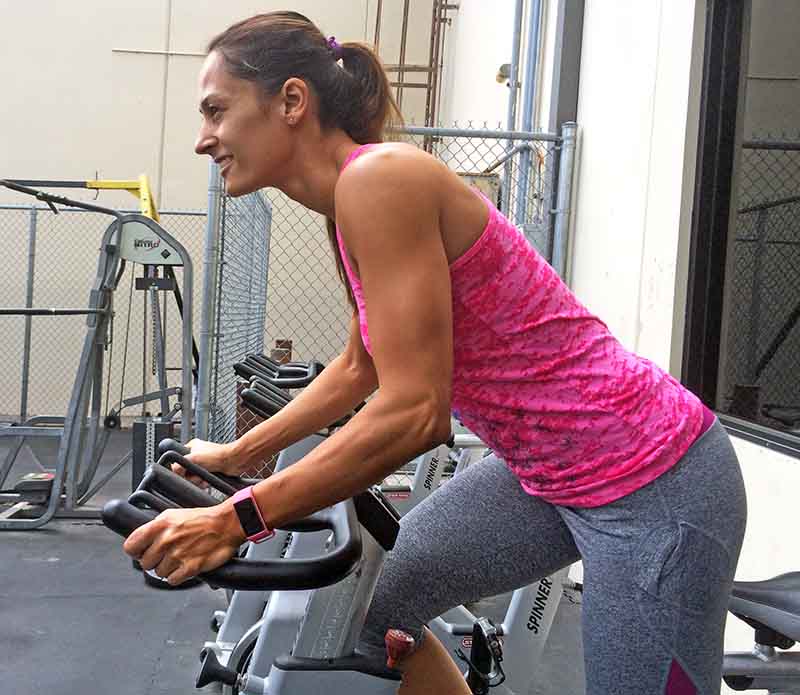Have you ever ever puzzled why your blood sugar falls throughout sure sorts of train while rising throughout and sorts of train? Or why you generally get excessive blood sugars after train?
If you happen to’re curious concerning the scientific rationalization of how train can increase blood sugar, learn on.

I not often come throughout scientific research that discover how train impacts blood sugar in folks dwelling with sort 1 diabetes, so once I not too long ago acquired my fingers on simply such a analysis paper, I dug in with nice curiosity (they specified sort 1 diabetes, however I might suppose that the outcomes are relevant to anyone utilizing insulin).
Properly really, Google and I dug in. This analysis paper is heavy studying. You recognize these scientific papers the place you are feeling such as you want a sophisticated diploma (plus an entire lot of Googling) simply to grasp the introduction? That is one in every of them.
The paper is titled “Impact of intermittent high-intensity in contrast with steady average train on glucose manufacturing and utilization in people with sort 1 diabetes”, and is written by a group of scientists from Australia. It was printed within the American Journal of Physiology – Endocrinology and Metabolism in 2007 (not precisely new analysis, however peer-reviewed analysis nonetheless, which suggests it’s legit).
I assumed that the topic was related and attention-grabbing sufficient to spend the time studying and understanding it. So, since I’ve executed the heavy studying, let me share what I’ve discovered with you.
Train and blood sugar impression
So why do some sorts of train make our blood sugar drop like loopy whereas others make it enhance or hardly have any impression? I do know from my very own expertise that I actually have to look at my blood sugars if I do regular state cardio, whereas an interval coaching session could have little impression and even make my blood sugars go up.
It seems that the primary purpose why interval coaching received’t make your sugars drop as a lot as regular state cardio comes down to 2 components.
- Improve in glucose manufacturing
- Glucose utilization
Each of those components are affected by train, no matter the kind of train you do. Nevertheless, the scientists discovered that after quarter-hour, there was a statistically important distinction within the two components relying on whether or not the take a look at topics did interval coaching or regular state cardio.
They discovered an general larger manufacturing of glucose, each throughout and as much as 2 hours post-exercise within the take a look at topics that did interval coaching when in comparison with these doing regular state cardio. Glucose utilization was additionally larger for the interval coaching group, but it surely by no means caught up with the glucose manufacturing.
Because of this interval coaching has much less of an impression on blood sugars (regardless of the interval coaching group placing in additional general work) than regular state cardiovascular coaching as a result of your physique is producing glucose as quick or sooner than you need to use it.
The scientists don’t know precisely why we see the higher enhance in glucose manufacturing for interval coaching, however they theorized that it could be attributable to muscle glucagon breakdown.
One other discovering was that cortisol (the stress hormone) didn’t enhance extra with interval coaching. That’s a very optimistic discovering since elevated cortisol isn’t one thing we usually try for because of the many unfavorable unintended effects resembling weight acquire, impaired immune perform, and gastrointestinal issues.

Find out how to implement the analysis findings
Except for me discovering this tremendous fascinating, what can we do with this info?
I believe that this can be a nice piece of information to have for skilled athletes, those that are simply beginning out, and for fogeys managing their child’s diabetes. It might probably function a information when figuring out the quantity of insulin and carbohydrates to securely administer previous to and publish an exercise.
The scientists in contrast interval coaching to sports activities like basketball and soccer the place you have got intense bursts of exercise. I might add newer sports activities resembling CrossFit, HIIT (high-intensity interval coaching) and HIT (high-intensity coaching). It is also boot camps, spinning courses, or should you simply do a number of cardiovascular interval coaching and heavy resistance coaching.
Armed with this scientific data (and a number of expertise), I do know that I don’t want to scale back my insulin as a lot earlier than and after an interval coaching or a resistance coaching session (I could even want a bit further insulin(!)), whereas I might want to make reductions if I do 40-60 minutes of regular state cardio.
For me, regular state cardio generally is a lengthy stroll, a motorbike experience, or strolling on an incline, Stairmaster or elliptical. With all of those actions, I’ll see an nearly instantaneous drop in blood sugars. Nevertheless, the improved glucose utilization wears off fairly rapidly after I cease exercising, so I do know to decrease my insulin previous to regular state cardio however not after.
To summarize:
- Train impacts BOTH glucose manufacturing and utilization
- When doing interval coaching, elevated glucose manufacturing outpaces your elevated glucose utilization
- When doing regular state cardio, glucose utilization dominates manufacturing
- Due to this, your blood sugar could rise throughout and after high-intensity interval train, whereas it more than likely will drop throughout regular state cardio
I hope this publish answered the query “does train enhance blood sugar?” If you wish to study extra about managing your blood sugar throughout train, please learn my article “Find out how to Handle Your Blood Sugars When Exercising with Diabetes“.
You possibly can learn the total scientific paper right here: Guelfi KJ, Ratnam N, Smythe GA, Jones TW, Fournier PA.:“Impact of intermittent high-intensity in contrast with steady average train on glucose manufacturing and utilization in people with sort 1 diabetes”: Am J Physiol Endocrinol Metab. 2007 Mar;292(3):E865-70.
If you happen to appreciated this publish about excessive blood sugar after train, please join our publication (and get a sign-up bonus) within the kind under. We ship out a weekly publication with the newest posts and recipes from Diabetes Robust.